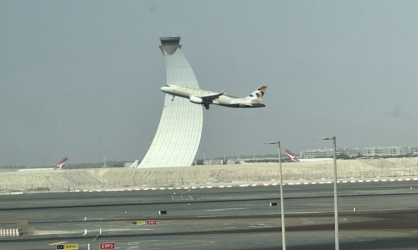So here's the economics, since I don't think most of us appreciate what it involves or costs. A380 has a 12 year cycle. Line maintenance checks (A & B checks) occur continuously on the flight line. Most is actually done at LAX since this is where the aircraft has the most downtime given the flight schedules as rotations at SYD are typically more rapid.
Base or heavy maintenance occur every 2nd year or every 12,000 flight hours, whichever comes 1st which; almost always the former. Airline can work on 3y/18,000h system, but QF use the 2y/12,000h system so lets use that. These are called C-checks; 6th & 12th year sometimes called D-checks as they're significantly bigger. Each check is different with tasks depending on exact aircraft specs:
C1: 120-140 tasks
C2: 180-200
C3 or D1: 375-400
C4: 190-210
C5: 120-140
C6 or D2: 650-700
QF's A380s going through C6. It's the biggest check in 12y cycle - can't be avoided or delayed! Example, OQL currently in AUH. Delivered 14 Dec 2011. Went in for D on 13 Mar 2024. 4m more than 12y? Weirdly, some time removed based on storage but Mar 2024 was hard deadline!
But OQL has been there for nearly 10 months! Why so long? C6 check takes about 50,000 man hours! Team of 50 working 8h/5d takes 25 weeks - call it 6 months! That's before any additional defects that come up & they invariably do.
Can't you just get more people onto it & get it done quicker? Not so simple. Sometimes just not practical or safe. Example, inspecting fuel tanks requires people to climb into the tanks. Good luck getting more than 1 or 2 in at a time. When removing a big component the number of people required is defined by procedures, can't just use more. More will get in the way.
On top of that there are other regulatory directives (similar to a recall on your car). Example, A380s have had to undergo an intensive wing spar check. Airbus come in to do that & takes nearly a month. These typically take place during heavy maintenance for obvious reasons. OQL was also due a cabin refit that takes another 3 months or more. So that takes us up to about 10 months without any lags or delays, which also invariably happen.
Now to costs: it'll take about 50,000 man hours - minimum! That's just for the D-check, not including remedial work on other defects & cabin refits. You're not going to get through this quicker. Imagine that's $50 to 60 per hour (in Australia). $2.5 to 3 million in labor alone. And that would be very, very low Australian wages. Not sure what exact wages are in Abu Dhabi, but in Manila, you're looking at $10 per hour, so $0.5 million in wages. Yes, it costs a bunch to get it to/from AUH. About A$300k, round trip. Peanuts compared to the difference in labor costs. We might agree that Qantas doesn't have sufficient scale to do it themselves, but also shows why it's nearly impossible for them to attract outside business.
So what we see is that simply no carrier in a high wage environment is doing their C6 check themselves. Not BA, LH, KE. But SQ do theirs? Yes, and shockingly they're paying less than half what techs earn here in Australia.
On other lines they do have scale and do a lot of their own heavy maintenance. They're doing about a third of their own B737 heavy maintenance, wifi installs on A330s, next cabin refits on A330s too.
Another big factor are the B787s. The B787 (similar to the A350) follows a different cycle where more tasks are subsumed in a greater variety of B checks, meaning less intensive C and D checks, to the point that it only has one rather than two D checks over the 12 year cycle, a C checks closer to every 3 years! But what this means is more work during the B checks, a lot more! And since B checks are line maintenance, these occur without taking aircraft off the flight line. This sucks in a lot more time into line maintenance, but ultimately saving time off the flight line. But it's making it more difficult to be doing this while D-checks on older aircraft. But investing in this capacity for aircraft that won't see another D-check is not worth it.


















